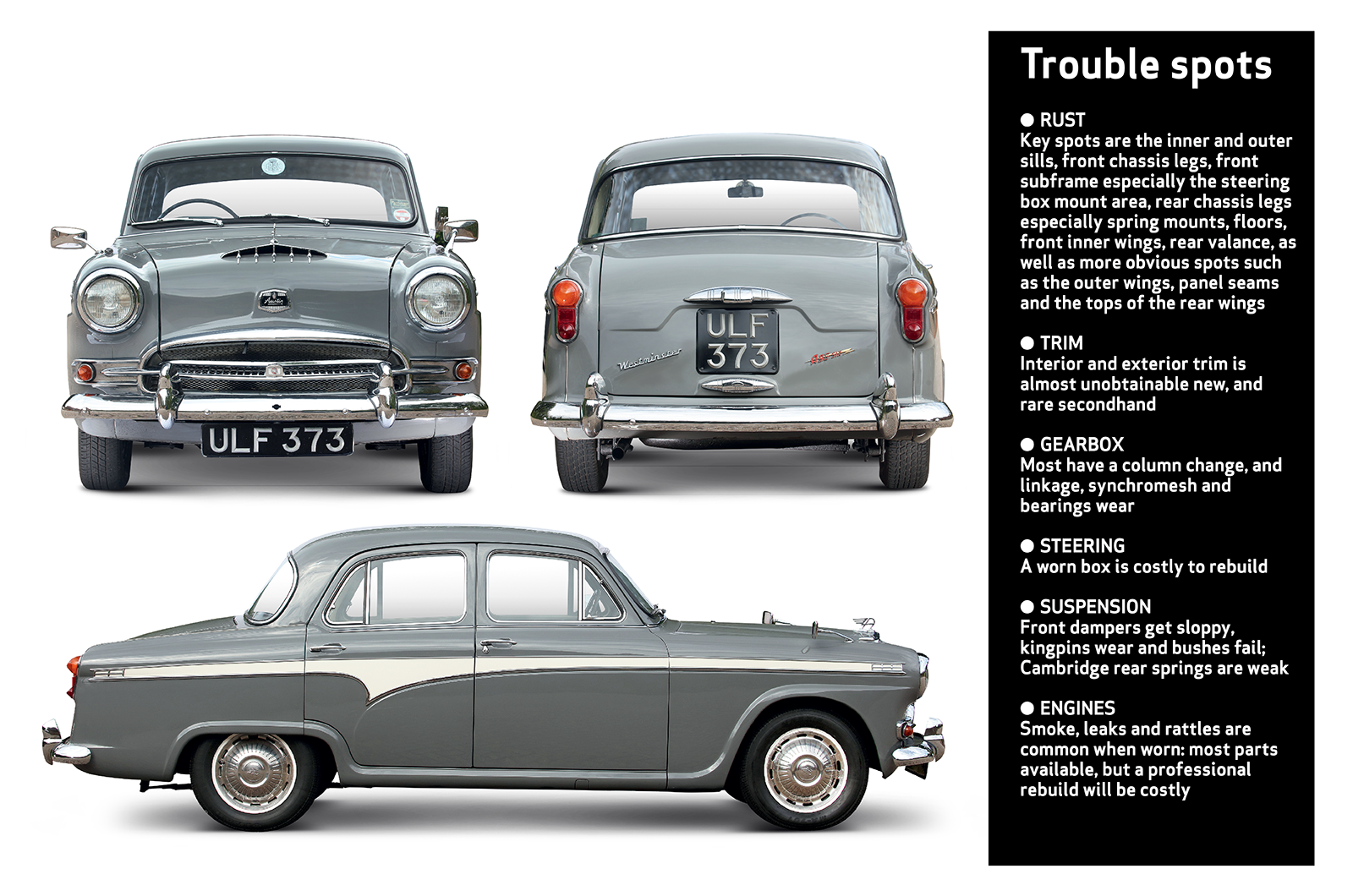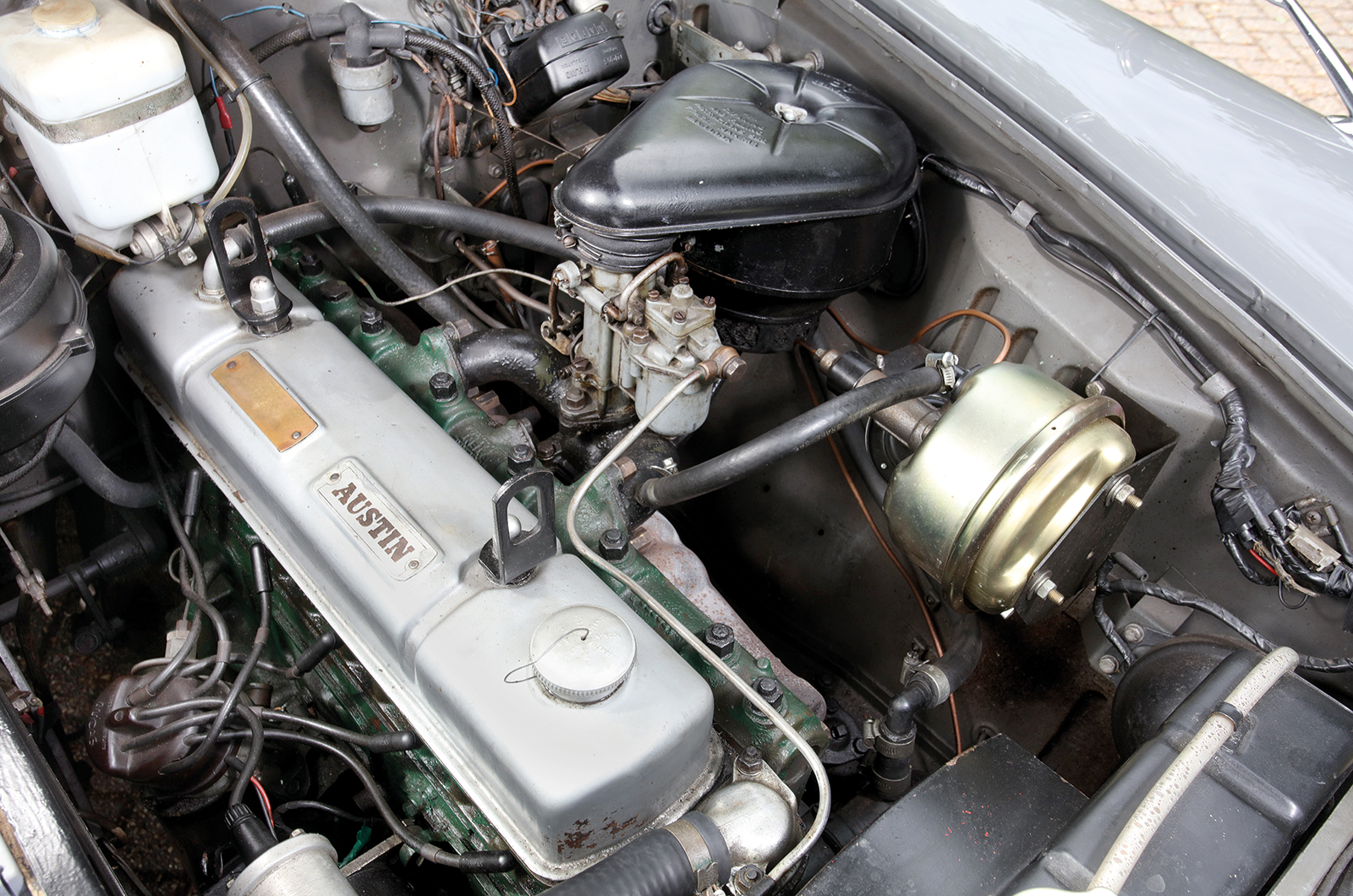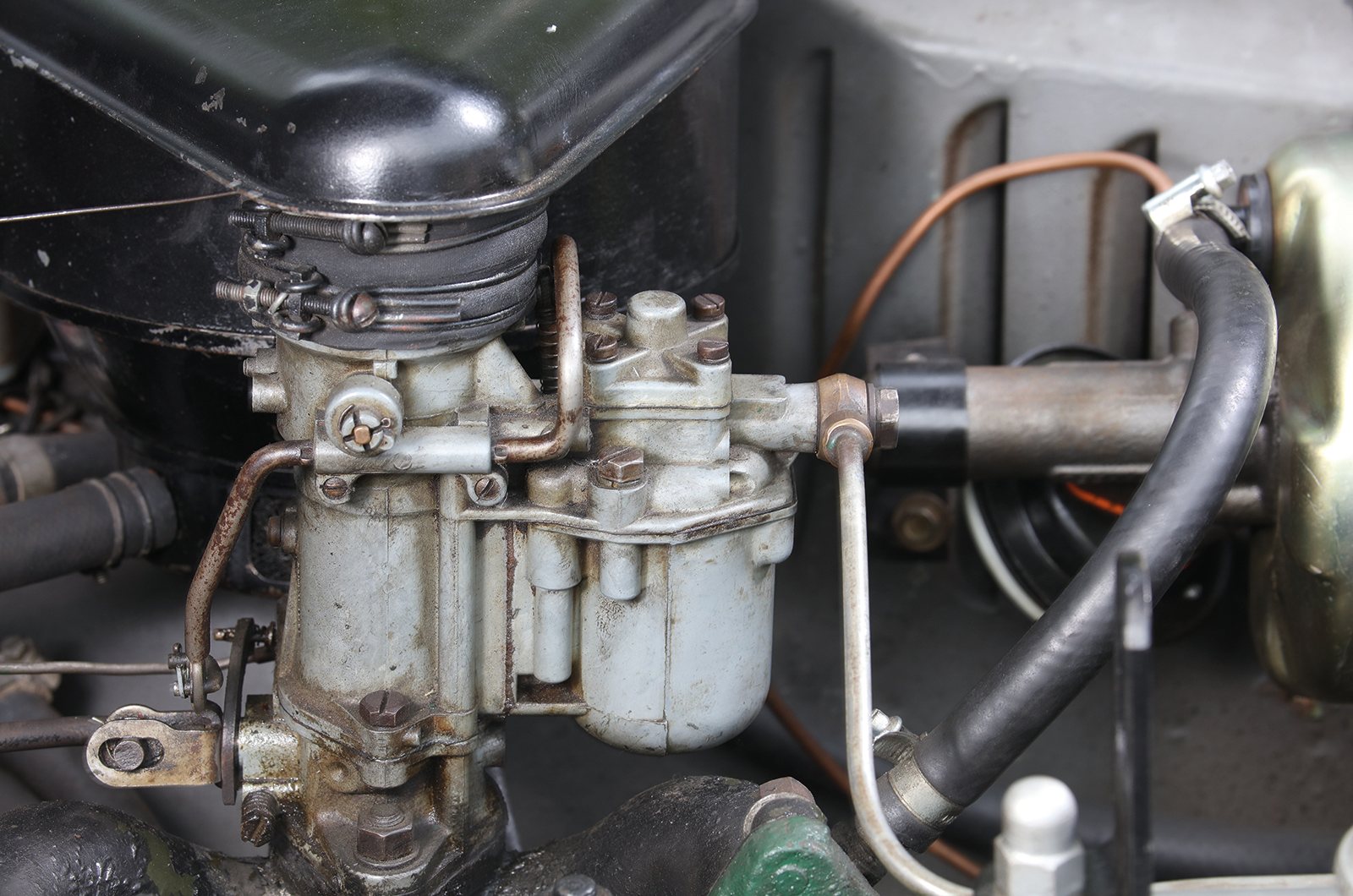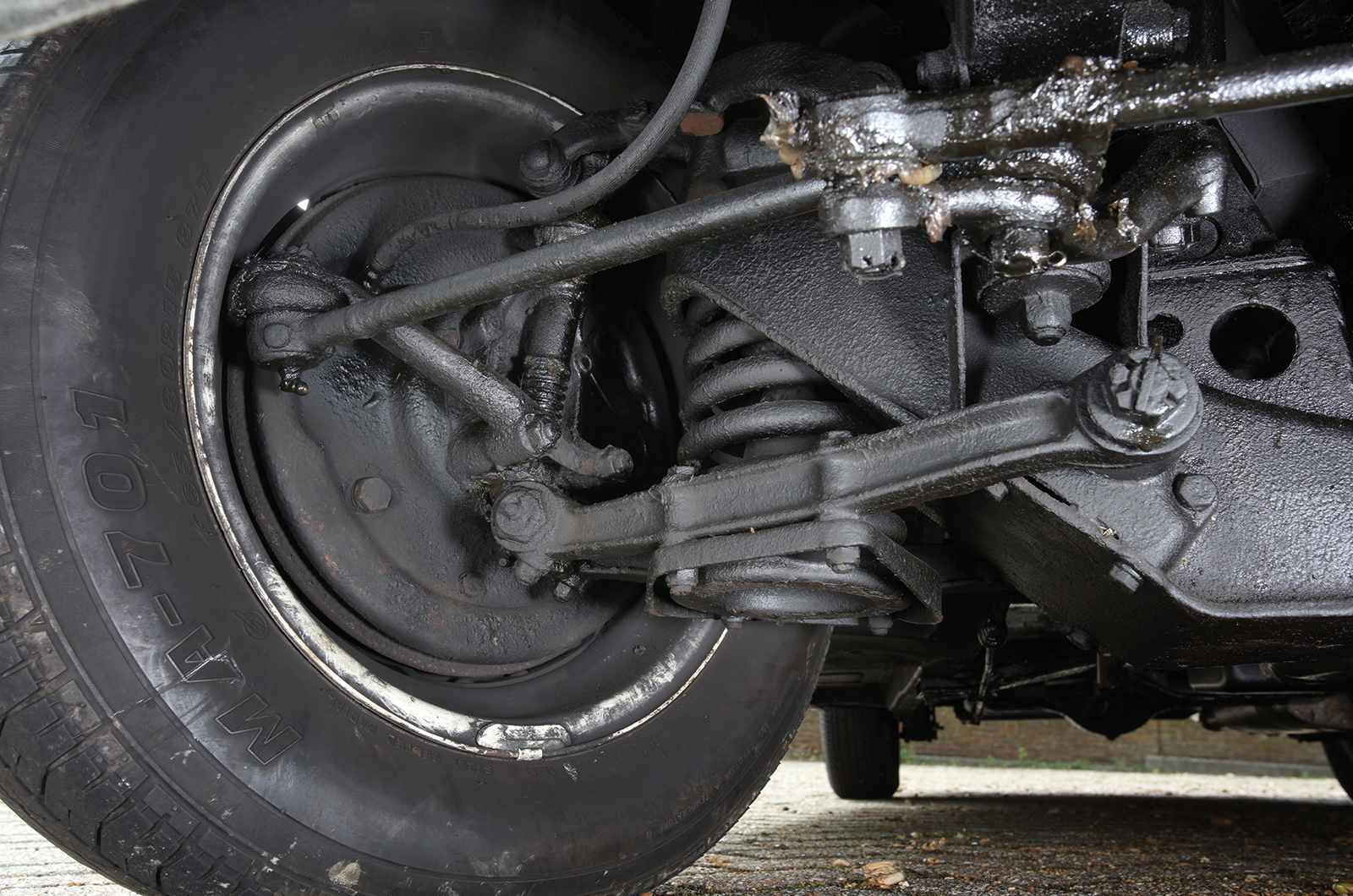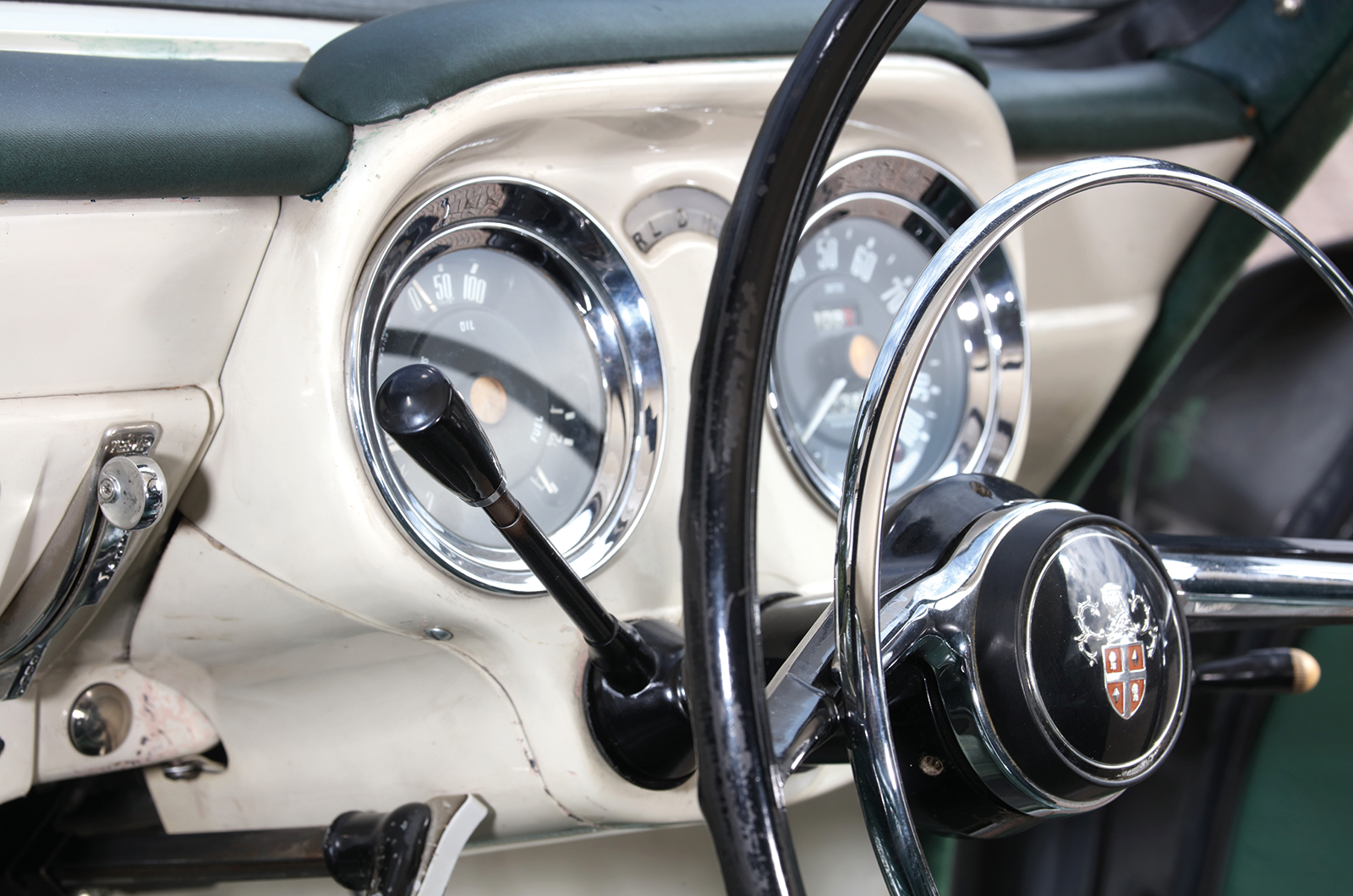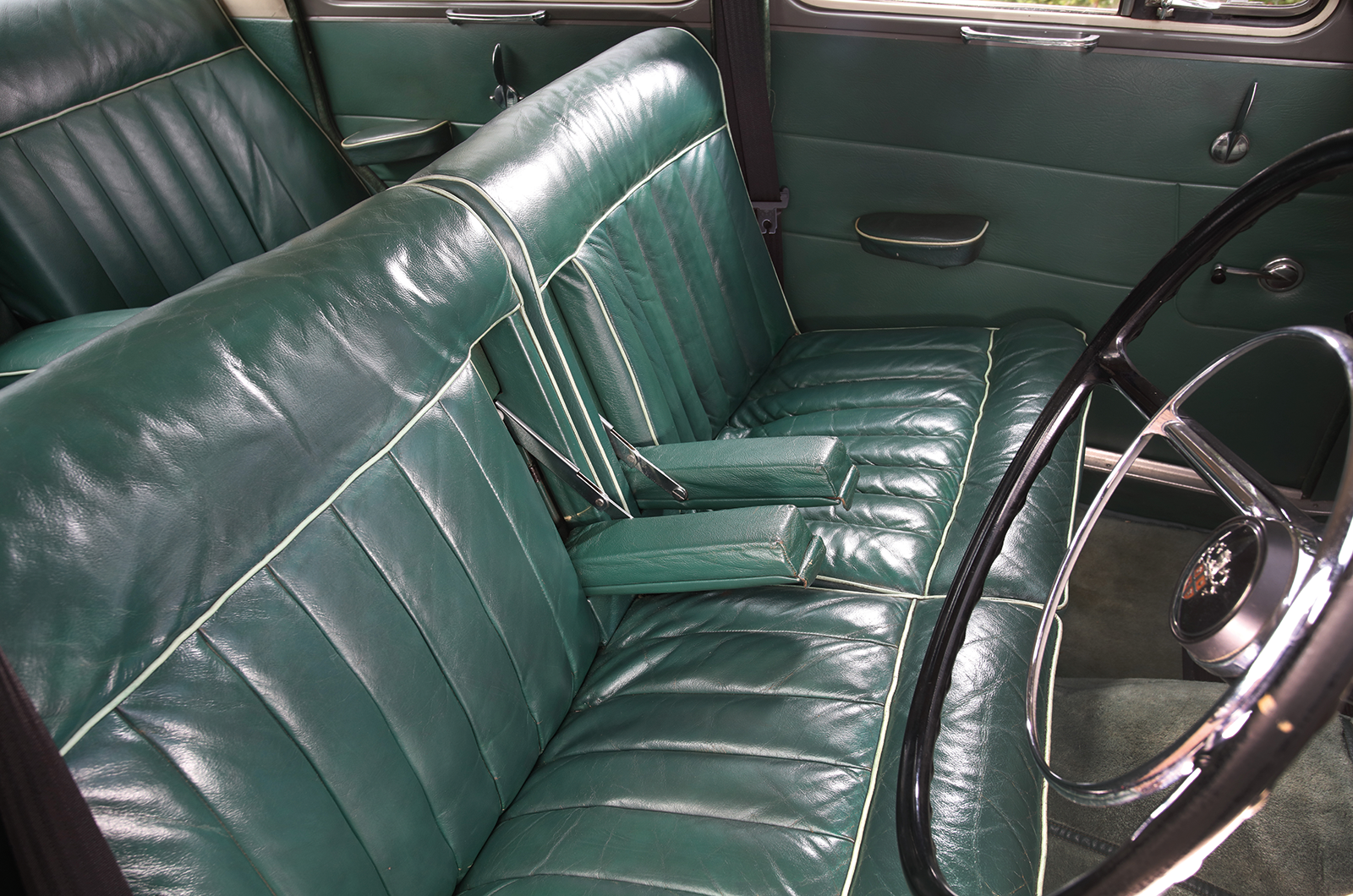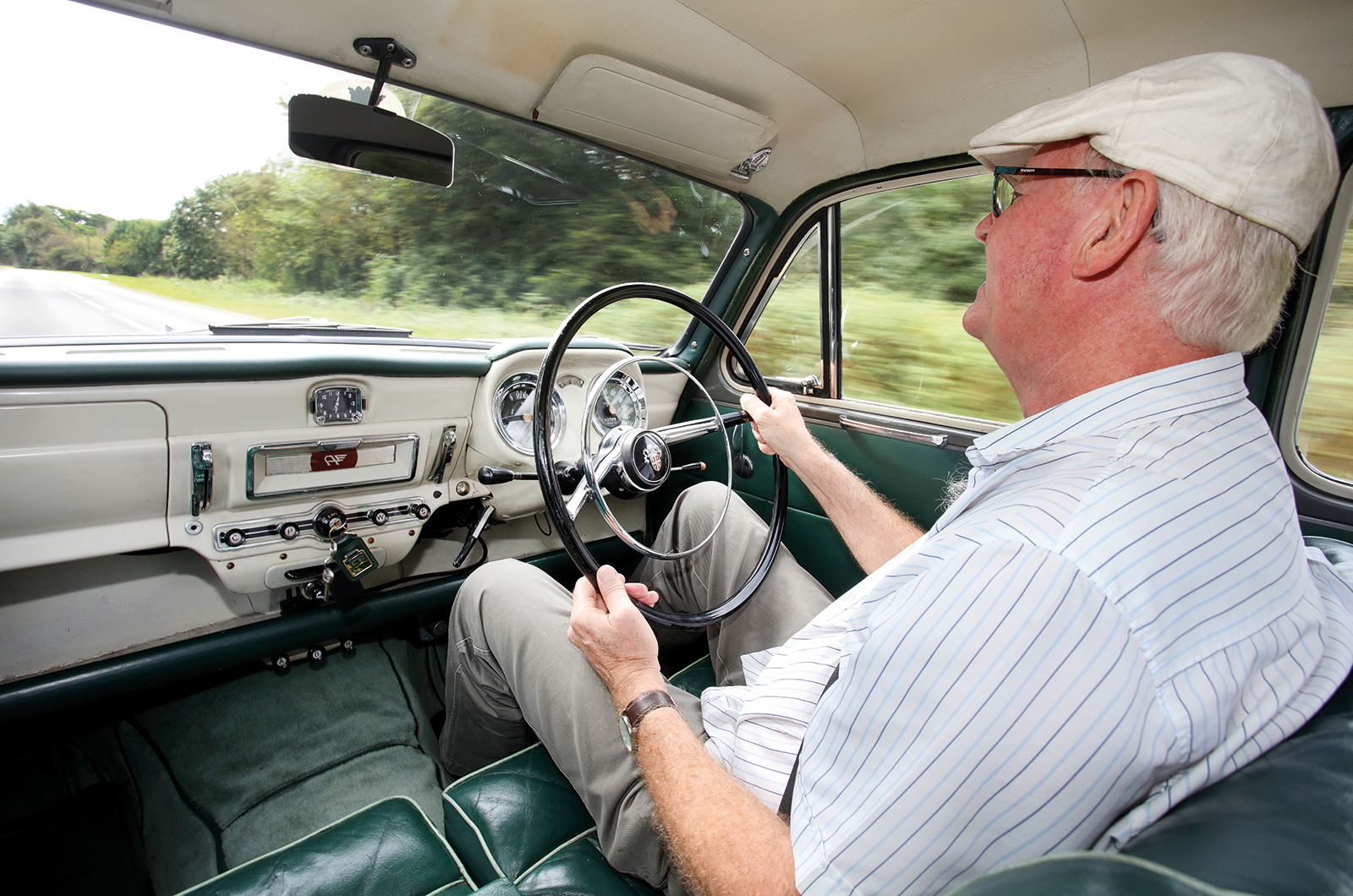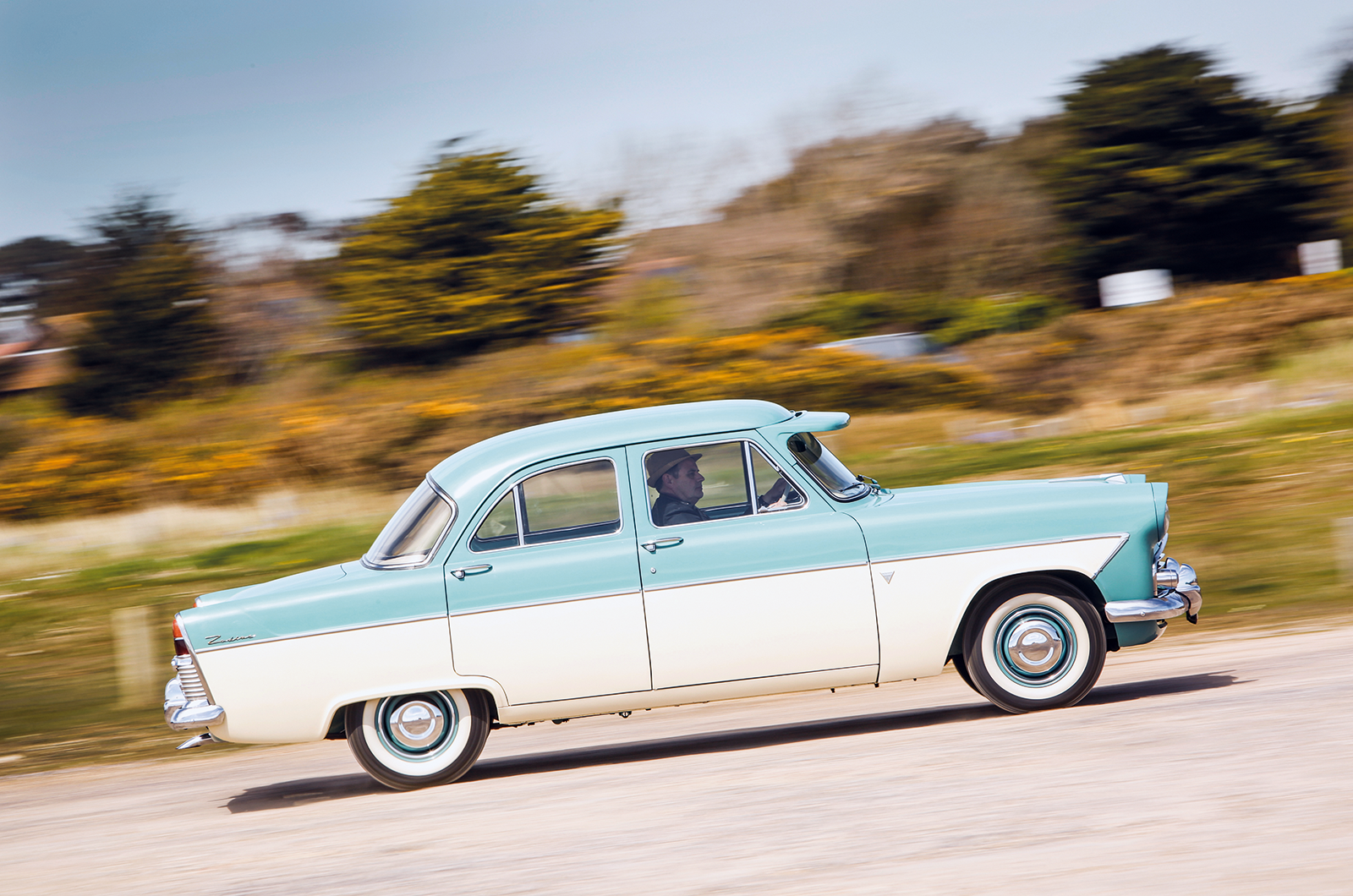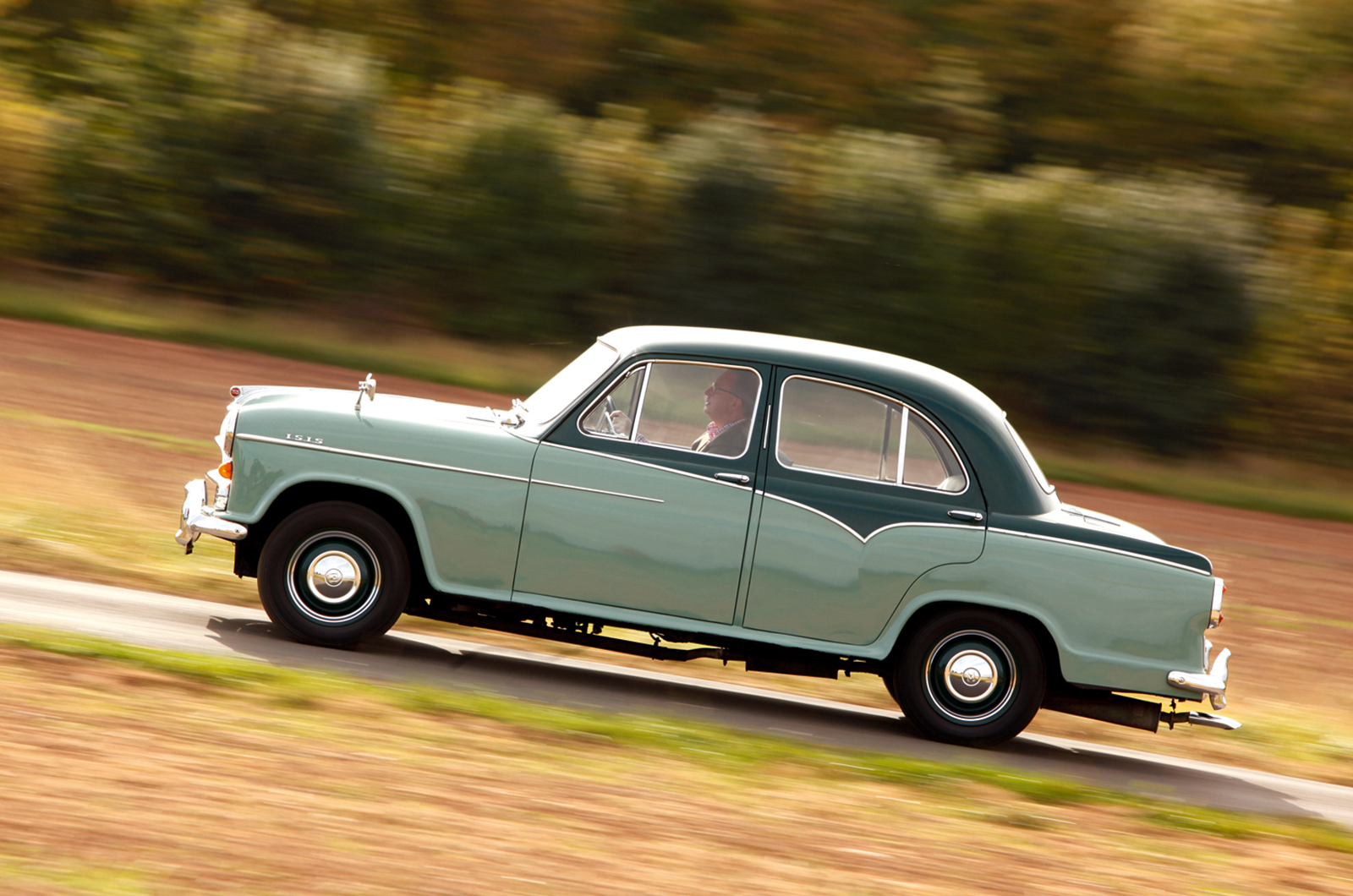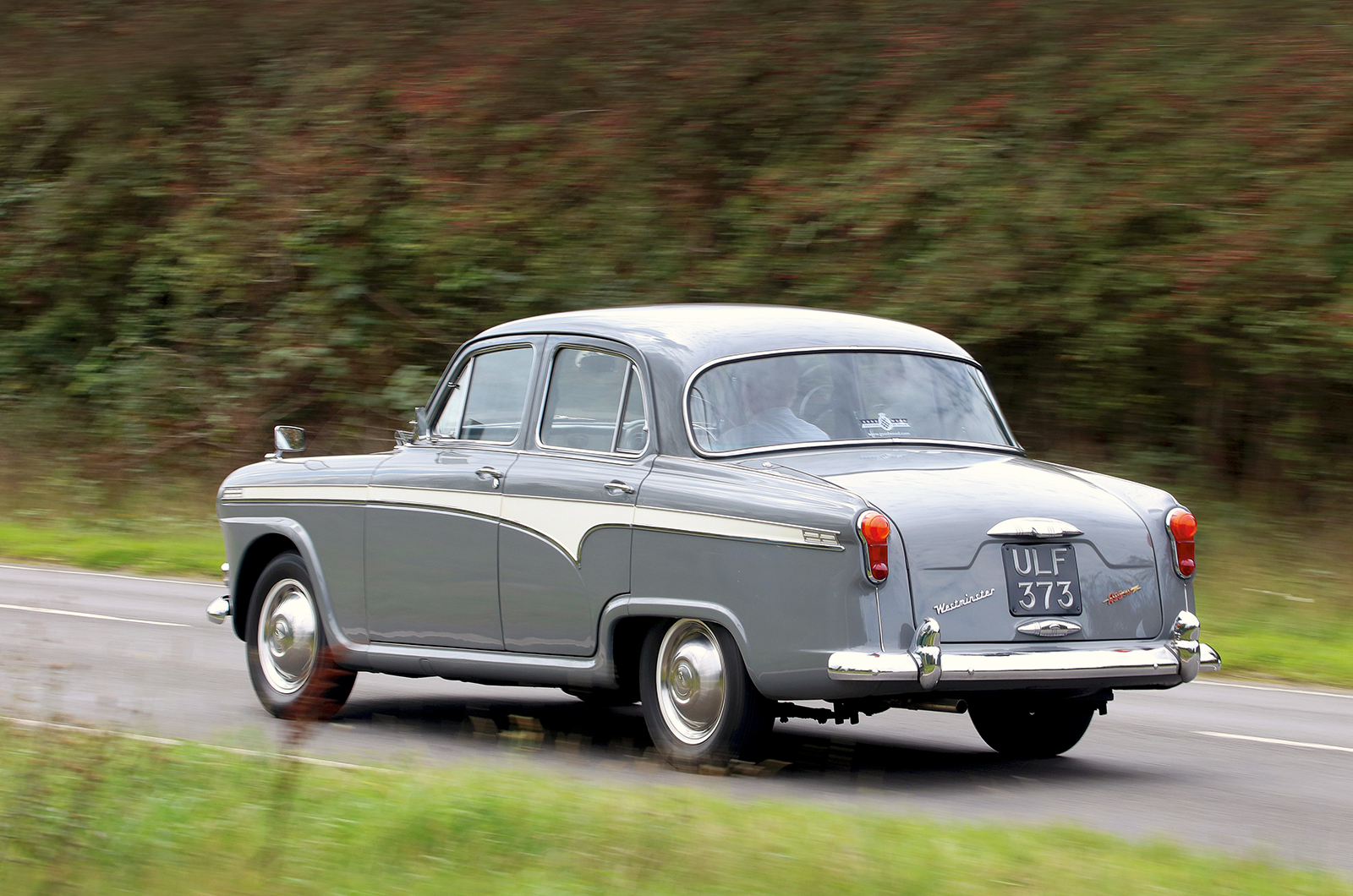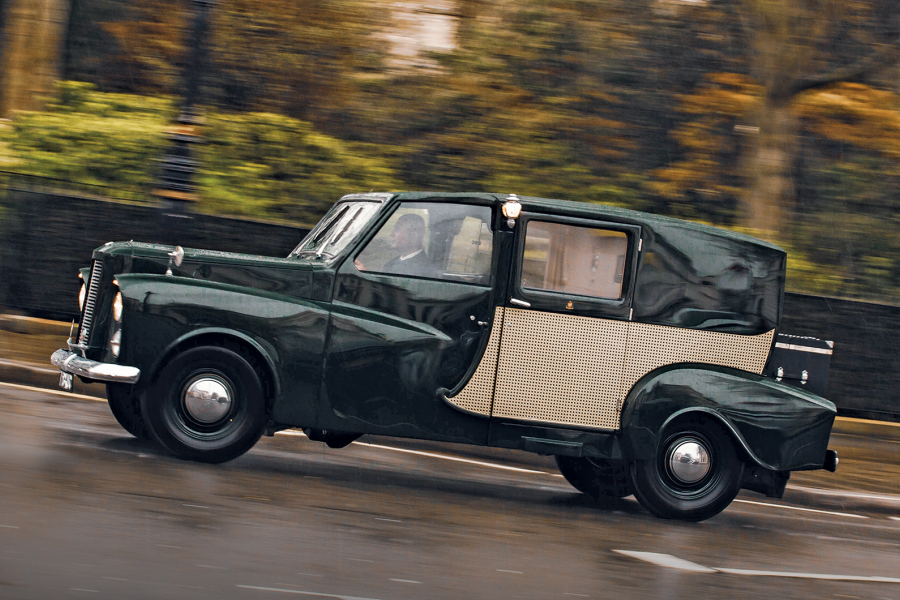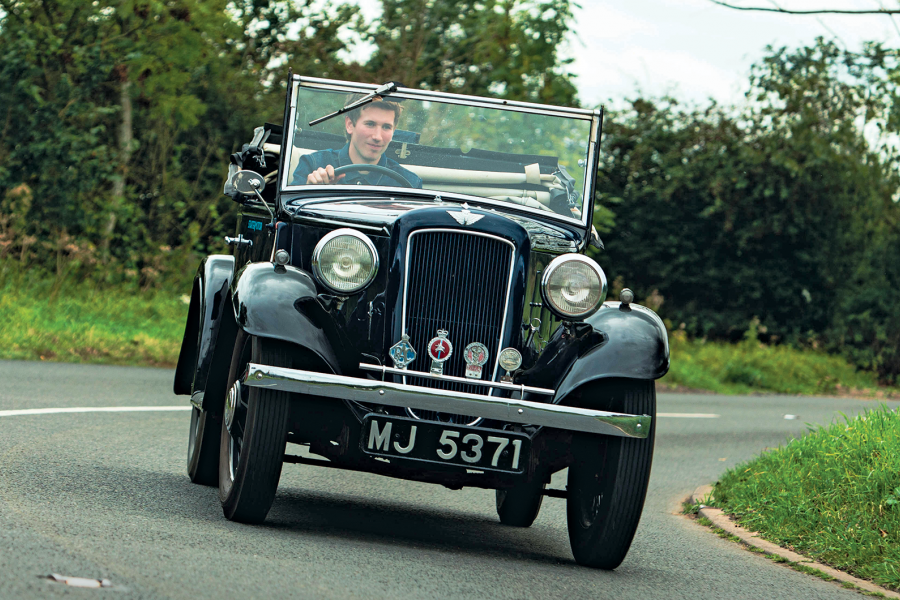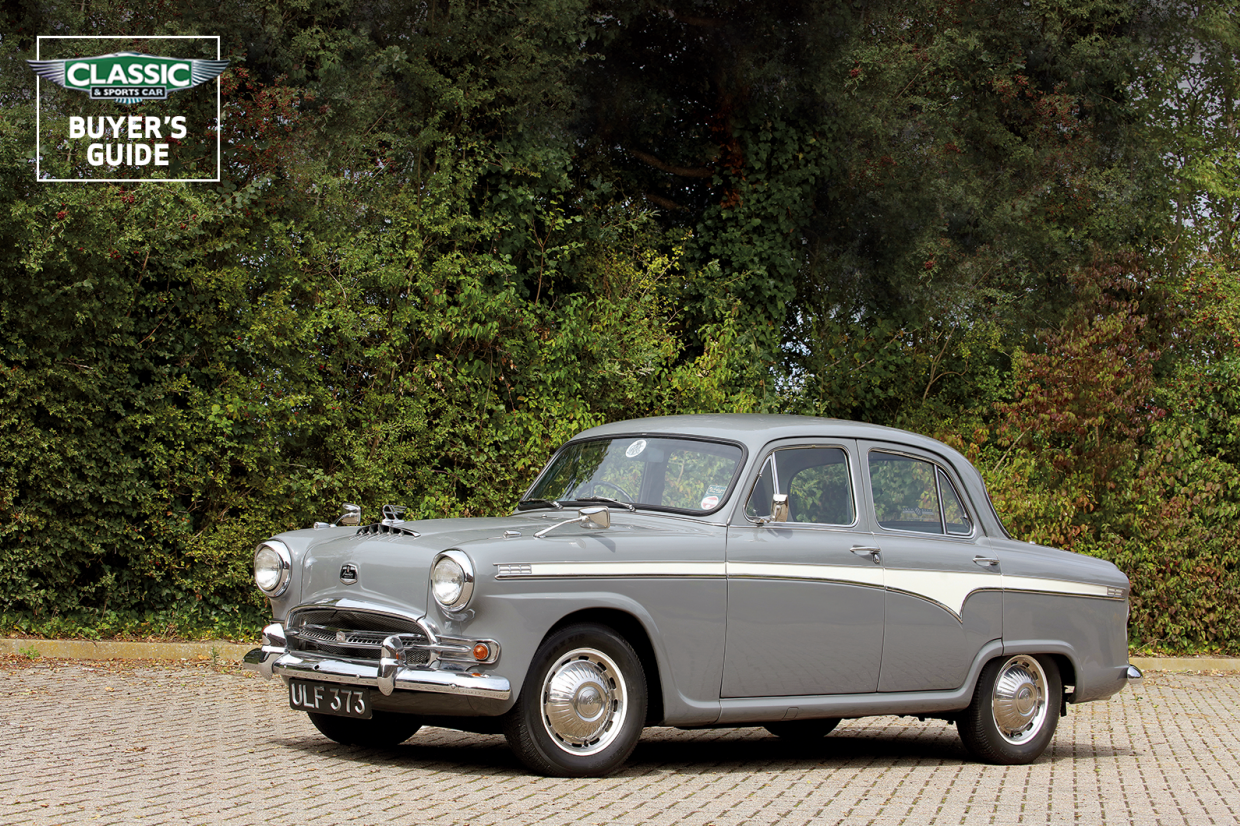
Why you’d want an Austin Cambridge or Westminster
Representing a sea-change from the dumpy, separate chassis A40 Somerset and A70 Hereford (and the A90 Atlantic), the Cambridge and Westminster ranges brought unitary construction – first used by Austin on the A30 – to the British firm’s larger saloons.
The engine and front suspension were on a separate subframe, rubber-mounted to the body to reduce vibration, noise and harshness.
The styling was all-new, too – modern enough for 1954, though after a few years the Duke of Edinburgh famously sent Leonard Lord scurrying to Farina for the next model.
But to today’s classic owner they have a wonderfully solid, traditional feel and style – and it would be unfair to consider them devoid of innovation.
The Austin badge on the bonnet proudly rode over a strategically positioned intake (refined by wind-tunnel testing, no less) for the ‘air-conditioning system’ – not air-con as we know it today, but ram-air ventilation and heating far superior to most contemporaries.
The Westminster boasted the new C-series six-cylinder engine and, despite its near-identical styling, it was both wider and longer than the Cambridge – the only panels shared were the doors.
The 2.6-litre engine was enough to give it a 4mph advantage over rival ‘sixes’ from Ford and Vauxhall, despite having just 85bhp at first.

